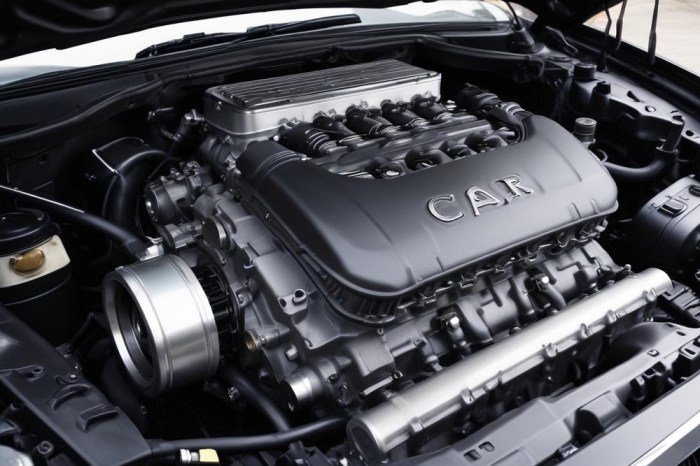Engine tuning for beginners is an exciting journey into the world of automotive performance, unlocking the secrets to maximizing your vehicle’s capabilities. Tuning your engine can enhance efficiency, responsiveness, and overall driving pleasure, making it a worthy pursuit for both novices and enthusiasts alike. As you embark on this path, understanding the fundamental concepts, goals, and debunking common myths surrounding engine tuning will set the foundation for your success.
Find out about how Cheapest car insurance for young drivers can deliver the best answers for your issues.
This guide will explore various types of engine tuning, essential components, necessary tools, and the step-by-step process to help you navigate the complexities of this craft. Whether you’re looking to boost performance or improve fuel efficiency, the knowledge shared here will empower you to make informed decisions as you fine-tune your engine.
Do not overlook the opportunity to discover more about the subject of Lamborghini Murciélago LP670-4 SuperVeloce.
Introduction to Engine Tuning: Engine Tuning For Beginners
Engine tuning is the process of modifying the internal combustion engine of a vehicle to optimize its performance, efficiency, and reliability. It plays a crucial role in enhancing the driving experience, improving fuel efficiency, and increasing the vehicle’s overall power output. For beginners, the primary goals of engine tuning often revolve around achieving better throttle response, increased horsepower, and improved fuel economy. However, there are numerous misconceptions surrounding engine tuning, such as the belief that it is solely about maximizing power or that it is only for racing enthusiasts.
Types of Engine Tuning
Engine tuning can be classified into various types, each serving different purposes. The two main categories are performance tuning and efficiency tuning. Performance tuning focuses on increasing the vehicle’s power and speed, while efficiency tuning aims to enhance fuel consumption and reduce emissions.
| Tuning Type | Pros | Cons |
|---|---|---|
| ECU Remapping | Improved power and torque, better throttle response | Potential compatibility issues, voiding warranties |
| Mechanical Adjustments | Tailored performance, enhanced engine longevity | Higher costs, requires technical knowledge |
| Chip Tuning | Easy installation, often reversible | Limited customization, may affect reliability |
Key Components of Engine Tuning, Engine tuning for beginners
Several components play a critical role in the engine tuning process. Understanding these elements is essential for any beginner looking to tune their engine effectively. Key components include air intake systems, exhaust systems, fuel injectors, and engine management systems.
- Air Intake Systems: Enhancing airflow into the engine improves combustion efficiency and increases horsepower.
- Exhaust Systems: Upgrading the exhaust system reduces back pressure, allowing exhaust gases to exit more freely, which enhances engine performance.
- Fuel Types: The type of fuel used can significantly impact engine performance, with higher-octane fuels often providing better efficiency and power.
- Engine Management Systems: These systems control various engine parameters, allowing for optimal performance adjustments based on tuning modifications.
Tools and Equipment for Beginners

For those new to engine tuning, having the right tools and equipment is vital. Basic tools include socket sets, screwdrivers, and torque wrenches, while diagnostic software can greatly assist in monitoring engine parameters.
| Tool | Function | Usage |
|---|---|---|
| OBD-II Scanner | Diagnostics and troubleshooting | Connect to the vehicle’s OBD-II port for data retrieval |
| Torque Wrench | Ensures correct fastening of components | Use for tightening bolts to specified torque settings |
| Air Fuel Ratio Gauge | Monitors air-fuel mixture | Install in the exhaust system to gauge efficiency |
Step-by-Step Engine Tuning Process

The engine tuning process involves a series of steps that beginners should follow to ensure safe and effective modifications. Begin by conducting a thorough assessment of the vehicle’s current performance. Next, gather necessary tools and equipment, and familiarize yourself with tuning basics.
– Start with minor adjustments before making significant changes.
– Always consult manufacturer specifications when adjusting engine components.
– Monitor engine performance closely and make adjustments gradually.
Safety precautions are also crucial during the tuning process. Ensure the vehicle is turned off while making adjustments, and wear appropriate safety gear, such as gloves and goggles.
Common Mistakes to Avoid

Beginners often encounter pitfalls during the engine tuning process. Recognizing these mistakes can save time and resources, leading to a more successful tuning experience.
- Neglecting to research components before upgrading can lead to compatibility issues.
- Overlooking safety precautions can result in accidents or injuries.
- Rushing the tuning process can lead to improper adjustments and performance issues.
- Failing to monitor engine parameters post-tuning may result in engine damage.
Maintenance After Tuning
Regular maintenance after tuning is vital to ensure that the engine continues to perform optimally. After modifications, monitoring engine performance is essential to identify any issues that may arise.
| Maintenance Task | Frequency |
|---|---|
| Check oil levels | Every 1,000 miles |
| Inspect air filter | Every 5,000 miles |
| Examine exhaust system | Every 10,000 miles |
Resources and Further Learning
For those looking to deepen their understanding of engine tuning, numerous resources are available. Books, websites, and online forums can provide valuable insights and guidance.
- Books: Look for titles that cover automotive performance topics and engine management.
- Websites: Explore dedicated automotive forums and tuning community websites for tips and advice.
- Local Workshops: Search for workshops or courses that offer hands-on engine tuning experiences.
- Online Tutorials: Utilize platforms like YouTube for visual guides on specific tuning processes.
Ultimate Conclusion
In summary, mastering engine tuning for beginners requires a blend of knowledge, practical skills, and ongoing commitment to maintenance. By understanding the different tuning types, utilizing the right tools, and avoiding common mistakes, you can achieve remarkable improvements in your vehicle’s performance. As you continue to learn and grow in this field, the resources and further learning opportunities will ensure that your engine tuning journey is both rewarding and enjoyable.
